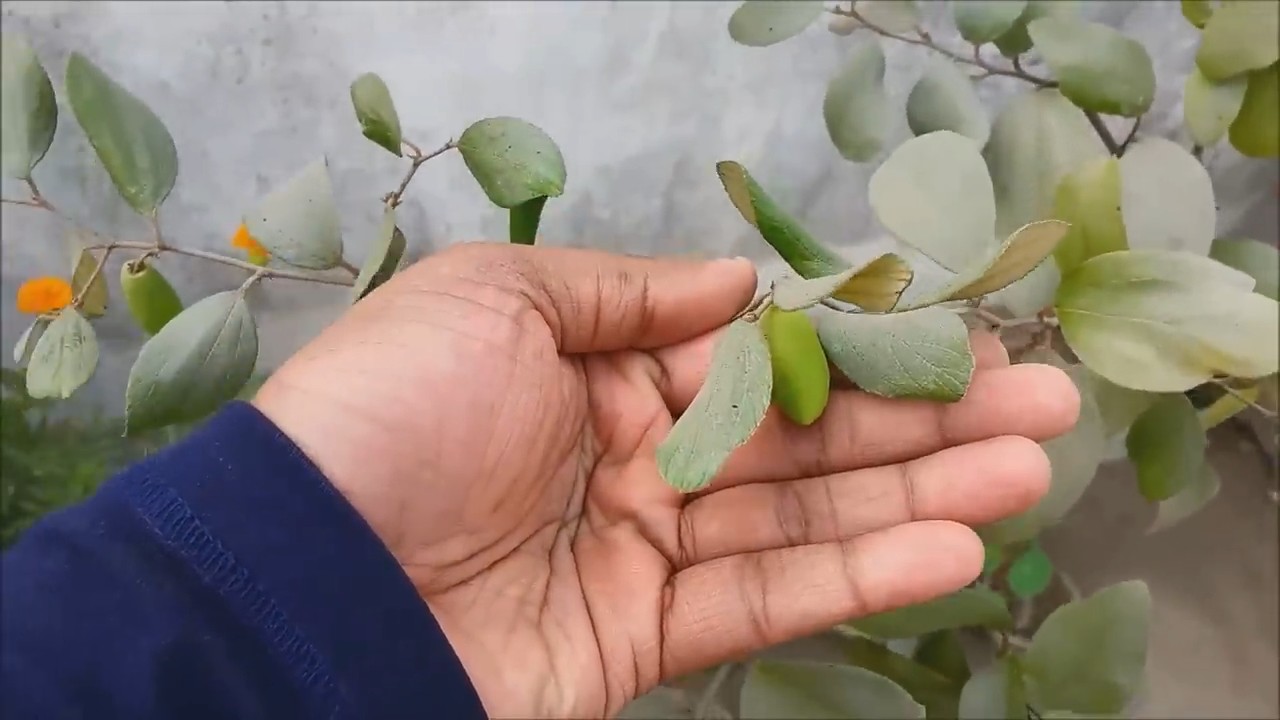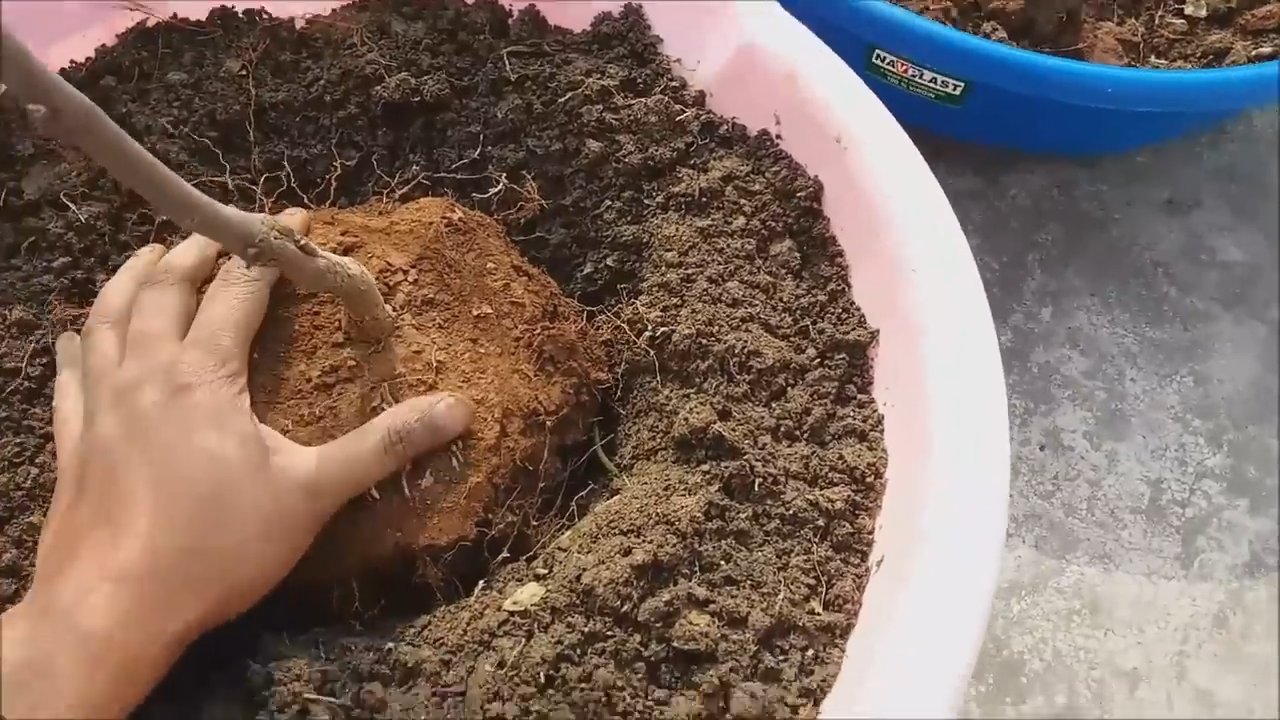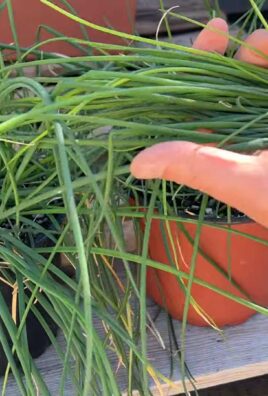Growing Jujube in Containers: Unlock the secrets to cultivating this ancient superfood right on your patio! Have you ever dreamed of harvesting your own sweet, chewy jujubes, but thought you didn’t have the space? Well, dream no more! This DIY guide will empower you to successfully grow these fascinating fruits, even if you’re limited to a balcony or small yard.
Jujubes, also known as Chinese dates, boast a rich history stretching back thousands of years. Revered in Asian cultures for their medicinal properties and delicious flavor, these resilient trees have been cultivated for centuries. Imagine tapping into that ancient tradition and enjoying the fruits of your own labor!
But why growing jujube in containers? Well, not everyone has the luxury of a sprawling orchard. Container gardening offers a fantastic solution for urban dwellers and those with limited space. Plus, it gives you greater control over the growing environment, protecting your precious jujube from harsh weather and pests. I’m going to show you how to choose the right container, soil, and variety, and share my best tips and tricks for ensuring a bountiful harvest. Get ready to embark on a rewarding gardening adventure and enjoy the unique taste of homegrown jujubes!

Jujube im Topf ziehen: Dein Leitfaden für eine reiche Ernte
Hey Gartenfreunde! Habt ihr schon mal von Jujube gehört? Diese kleinen, dattelähnlichen Früchte sind nicht nur super lecker, sondern auch unglaublich gesund. Und das Beste: Ihr könnt sie auch ganz einfach im Topf ziehen! Ich zeige euch, wie es geht.
Warum Jujube im Topf?
Jujube-Bäume sind eigentlich recht robust und können auch in kälteren Klimazonen überleben. Aber das Ziehen im Topf hat einige Vorteile:
* Flexibilität: Ihr könnt den Baum leicht an einen sonnigen Standort verschieben oder ihn im Winter vor Frost schützen.
* Kontrolle: Ihr habt die volle Kontrolle über die Bodenqualität und die Bewässerung.
* Platzsparend: Ideal für Balkone, Terrassen oder kleine Gärten.
* Frühere Ernte: Im Topf gezogene Bäume können oft früher Früchte tragen.
Was du brauchst: Die Materialliste
Bevor wir loslegen, hier eine Liste mit allen Dingen, die du für dein Jujube-Topfprojekt benötigst:
* Jujube-Baum (veredelt): Wähle eine Sorte, die für den Anbau im Topf geeignet ist. Beliebte Sorten sind ‘Li’, ‘Lang’ oder ‘Sherwood’. Achte darauf, dass der Baum veredelt ist, um sicherzustellen, dass er auch wirklich Früchte trägt.
* Großer Topf: Der Topf sollte mindestens 50 cm Durchmesser und Tiefe haben. Je größer, desto besser, da der Baum Platz zum Wachsen braucht.
* Hochwertige Blumenerde: Eine gut durchlässige Mischung aus Gartenerde, Kompost und Sand ist ideal. Vermeide reine Gartenerde, da diese oft zu schwer ist.
* Drainagematerial: Blähton, Kies oder Tonscherben für den Boden des Topfes, um Staunässe zu vermeiden.
* Organischer Dünger: Langzeitdünger oder Kompost, um den Baum mit Nährstoffen zu versorgen.
* Gießkanne oder Schlauch: Zum Bewässern des Baumes.
* Gartenschere: Zum Beschneiden des Baumes.
* Stützpfahl (optional): Für junge Bäume, die noch nicht stabil genug sind.
* Mulch (optional): Rindenmulch oder Stroh, um die Feuchtigkeit im Boden zu halten und Unkraut zu unterdrücken.
Schritt-für-Schritt-Anleitung: So pflanzt du deinen Jujube-Baum
1. Topf vorbereiten:
* Lege eine Schicht Drainagematerial (Blähton, Kies oder Tonscherben) auf den Boden des Topfes. Das sorgt für eine gute Drainage und verhindert Staunässe.
* Fülle den Topf mit einer Schicht Blumenerde.
2. Baum vorbereiten:
* Nimm den Jujube-Baum vorsichtig aus dem Anzuchttopf.
* Lockere die Wurzeln etwas auf, falls sie stark verwurzelt sind.
3. Einpflanzen:
* Setze den Baum mittig in den Topf. Die Oberseite des Wurzelballens sollte etwa 2-3 cm unter dem Topfrand liegen.
* Fülle den Topf mit Blumenerde auf und drücke sie leicht an.
4. Bewässern:
* Gieße den Baum gründlich, bis das Wasser aus den Drainagelöchern abläuft.
5. Düngen:
* Gib dem Baum eine Dosis organischen Langzeitdüngers oder Kompost.
6. Mulchen (optional):
* Bedecke die Oberfläche der Erde mit einer Schicht Mulch, um die Feuchtigkeit zu halten und Unkraut zu unterdrücken.
7. Stützen (optional):
* Wenn der Baum noch jung und instabil ist, stütze ihn mit einem Stützpfahl.
Die richtige Pflege: So bleibt dein Jujube-Baum glücklich
Die richtige Pflege ist entscheidend für eine reiche Ernte. Hier sind einige Tipps, die du beachten solltest:
* Standort: Jujube-Bäume lieben die Sonne! Stelle den Topf an einen sonnigen Standort, der mindestens 6-8 Stunden Sonnenlicht pro Tag bekommt.
* Bewässerung: Gieße den Baum regelmäßig, besonders während der Wachstumsperiode und bei heißem Wetter. Achte darauf, dass die Erde nicht austrocknet, aber vermeide Staunässe. Überprüfe die Feuchtigkeit der Erde, indem du deinen Finger etwa 2-3 cm tief in die Erde steckst. Wenn sie sich trocken anfühlt, ist es Zeit zu gießen.
* Düngung: Dünge den Baum regelmäßig während der Wachstumsperiode (Frühling und Sommer) mit einem organischen Dünger. Befolge die Anweisungen auf der Verpackung.
* Beschneidung: Beschneide den Baum regelmäßig, um seine Form zu erhalten und die Fruchtbildung zu fördern. Entferne abgestorbene, beschädigte oder kranke Äste. Der beste Zeitpunkt für den Rückschnitt ist im späten Winter oder frühen Frühling, bevor das neue Wachstum beginnt.
* Überwinterung: Jujube-Bäume sind relativ frosthart, aber im Topf sind sie anfälliger für Frostschäden. In kälteren Regionen solltest du den Baum im Winter an einen geschützten Ort stellen, z.B. in eine Garage oder einen Schuppen. Du kannst den Topf auch mit Jute oder Noppenfolie isolieren. Gieße den Baum während der Winterruhe nur sparsam.
* Schädlinge und Krankheiten: Jujube-Bäume sind relativ resistent gegen Schädlinge und Krankheiten. Achte aber trotzdem auf Anzeichen von Befall und behandle sie gegebenenfalls mit einem geeigneten Mittel.
Spezielle Tipps für eine reiche Ernte
* Bestäubung: Jujube-Bäume sind selbstfruchtbar, aber eine Fremdbestäubung kann die Ernte verbessern. Wenn du nur einen Baum hast, kannst du die Blüten von Hand bestäuben, indem du mit einem Pinsel den Pollen von einer Blüte zur anderen überträgst.
* Ausdünnen der Früchte: Wenn der Baum zu viele Früchte trägt, kann es sinnvoll sein, einige davon auszudünnen. Das ermöglicht es den verbleibenden Früchten, größer und süßer zu werden.
* Erntezeitpunkt: Jujube-Früchte sind reif, wenn sie ihre Farbe von grün nach braun oder rot ändern und leicht vom Baum fallen. Sie können frisch gegessen, getrocknet oder zu Marmelade verarbeitet werden.
Häufige Probleme und Lösungen
* Gelbe Blätter: Können ein Zeichen für Überwässerung, Nährstoffmangel oder Schädlingsbefall sein. Überprüfe die Bewässerung, dünge den Baum und untersuche ihn auf Schädlinge.
* Keine Früchte: Kann an mangelnder Sonneneinstrahlung, unzureichender Bestäubung oder zu jungem Baum liegen. Stelle den Baum an einen sonnigeren Standort, bestäube die Blüten von Hand und warte, bis der Baum älter ist.
* Schädlinge: Blattläuse, Spinnmilben oder Schildläuse können Jujube-Bäume befallen. Behandle den Baum mit einem geeigneten Insektizid oder einer natürlichen Lösung wie Neemöl.
Jujube-Sorten für den Topf
Nicht alle Jujube-Sorten sind gleich gut für den Anbau im Topf geeignet. Hier sind einige empfehlenswerte Sorten:
* Li: Eine der beliebtesten Sorten mit großen, süßen Früchten.
* Lang: Eine weitere beliebte Sorte mit länglichen Früchten.
* Sherwood: Eine frühe Sorte mit kleinen, süßen Früchten.
* Sugar Cane: Eine sehr süße Sorte mit kleinen Früchten.
Zusätzliche Tipps und Tricks
* Verwende einen Topf mit guter Drainage: Staunässe ist der größte Feind von Jujube-Bäumen.
* Gieße den Baum am Morgen: So haben die Blätter Zeit, vor der Nacht abzutrocknen, was das Risiko von Pilzkrankheiten verringert.
* Beobachte den Baum regelmäßig: Achte auf Anzeichen von Schädlingen, Krankheiten oder Nährstoffmangel.
* Sei geduldig: Es kann einige Jahre dauern,

Conclusion
So, there you have it! Growing jujube in containers isn’t just a possibility; it’s a pathway to enjoying fresh, delicious fruit even if you’re limited by space. This DIY trick, transforming your patio or balcony into a mini-orchard, is a game-changer for urban gardeners and anyone who dreams of harvesting their own fruit. The benefits are undeniable: control over soil conditions, protection from harsh weather, and the sheer joy of nurturing a tree from sapling to fruit-bearing beauty.
But why is this a must-try? Beyond the obvious reward of homegrown jujubes, container gardening offers a unique level of engagement with nature. You’ll learn about the specific needs of your tree, from watering schedules to fertilization techniques, fostering a deeper connection to the growing process. Plus, let’s be honest, there’s a certain satisfaction in defying expectations. People might be surprised to see a thriving jujube tree in a pot, and you’ll be the one to show them how it’s done.
Consider these variations to personalize your container jujube experience. Experiment with different jujube varieties known for their compact growth habits, such as ‘Li’ or ‘Lang’. You can also explore companion planting, adding herbs like basil or rosemary to the container to deter pests and enhance the overall health of your tree. For a visually stunning display, choose a decorative pot that complements your outdoor space. Think terracotta for a rustic feel, or a sleek, modern container for a contemporary look.
Don’t be afraid to get creative with your soil mix. While the recommended blend of well-draining potting mix, compost, and sand works wonders, you can tailor it to your specific climate and the needs of your jujube variety. For example, if you live in a particularly dry area, adding a moisture-retentive component like coco coir can help prevent the soil from drying out too quickly.
The key to success with growing jujube in containers lies in consistent care and attention. Regularly monitor the soil moisture, fertilize during the growing season, and prune your tree to maintain its shape and encourage fruit production. With a little effort, you’ll be rewarded with a bountiful harvest of sweet, nutritious jujubes.
We wholeheartedly encourage you to give this DIY trick a try. It’s an investment in your well-being, a chance to connect with nature, and a delicious way to enjoy the fruits of your labor. Once you’ve embarked on your container jujube journey, we’d love to hear about your experience. Share your tips, tricks, and triumphs in the comments below. Let’s build a community of container jujube enthusiasts and inspire others to embrace the joy of homegrown fruit! Let us know what variety you chose, what challenges you faced, and what you learned along the way. Your insights could be invaluable to someone just starting out. Happy growing!
Frequently Asked Questions (FAQ)
What is the best size container for growing a jujube tree?
The ideal container size for a jujube tree is at least 20-25 gallons. This provides ample space for the root system to develop and ensures the tree has enough room to grow without becoming root-bound. A larger container is always preferable, especially for long-term growth. Remember that the larger the container, the less frequently you’ll need to water. Also, consider the weight of a large, soil-filled container and ensure your patio or balcony can support it.
How often should I water my container jujube tree?
Watering frequency depends on several factors, including the size of the container, the climate, and the age of the tree. Generally, you should water your jujube tree when the top inch or two of soil feels dry to the touch. During hot, dry weather, you may need to water daily, while during cooler, wetter periods, you can reduce the frequency. Avoid overwatering, as this can lead to root rot. Ensure the container has adequate drainage to prevent water from pooling at the bottom. A good rule of thumb is to water deeply until water drains out of the drainage holes.
What type of soil is best for container jujube trees?
A well-draining soil mix is crucial for container jujube trees. A good blend consists of equal parts high-quality potting mix, compost, and coarse sand or perlite. The potting mix provides essential nutrients, the compost improves drainage and water retention, and the sand or perlite enhances aeration. Avoid using garden soil, as it can become compacted in containers and hinder root growth. You can also add a slow-release fertilizer to the soil mix to provide a steady supply of nutrients.
How much sunlight does a container jujube tree need?
Jujube trees thrive in full sun, requiring at least 6-8 hours of direct sunlight per day. Choose a location for your container jujube tree that receives ample sunlight throughout the day. If you live in a particularly hot climate, you may need to provide some afternoon shade to prevent the leaves from scorching. Insufficient sunlight can lead to poor fruit production and stunted growth.
When and how should I fertilize my container jujube tree?
Fertilize your container jujube tree during the growing season, which typically runs from spring to late summer. Use a balanced fertilizer with an NPK ratio of 10-10-10 or 14-14-14. Follow the instructions on the fertilizer packaging for application rates. You can also use organic fertilizers, such as compost tea or fish emulsion. Avoid fertilizing during the dormant season (fall and winter).
How do I prune my container jujube tree?
Pruning is essential for maintaining the shape and health of your container jujube tree. Prune in late winter or early spring, before new growth begins. Remove any dead, damaged, or crossing branches. You can also prune to shape the tree and encourage fruit production. Jujube trees produce fruit on new growth, so avoid excessive pruning that removes too much of the current year’s growth.
Are jujube trees self-pollinating?
While some jujube varieties are self-pollinating, others benefit from cross-pollination. If you only have one jujube tree, choose a self-pollinating variety like ‘Li’ or ‘Lang’. If you want to grow multiple varieties, planting two different varieties near each other will improve fruit set. Bees and other pollinators will help transfer pollen between the trees.
How do I protect my container jujube tree from pests and diseases?
Container jujube trees are generally resistant to pests and diseases, but it’s still important to monitor them regularly. Common pests include aphids, spider mites, and scale. You can control these pests with insecticidal soap or neem oil. Diseases are less common, but root rot can occur if the soil is poorly drained. Ensure the container has adequate drainage and avoid overwatering.
Can I move my container jujube tree indoors during the winter?
Jujube trees are deciduous and require a period of dormancy during the winter. While you can move your container jujube tree indoors to protect it from extreme cold, it’s important to provide it with a cool, dark location where it can go dormant. Reduce watering during the dormant season. Alternatively, you can protect the tree outdoors by wrapping the container with burlap or moving it to a sheltered location.
How long does it take for a container jujube tree to produce fruit?
The time it takes for a container jujube tree to produce fruit depends on the age of the tree and the variety. Grafted trees typically begin producing fruit within 1-3 years, while trees grown from seed may take longer. Proper care, including adequate sunlight, watering, and fertilization, will help accelerate fruit production. Be patient, and you’ll soon be rewarded with a bountiful harvest of delicious jujubes.





Leave a Comment